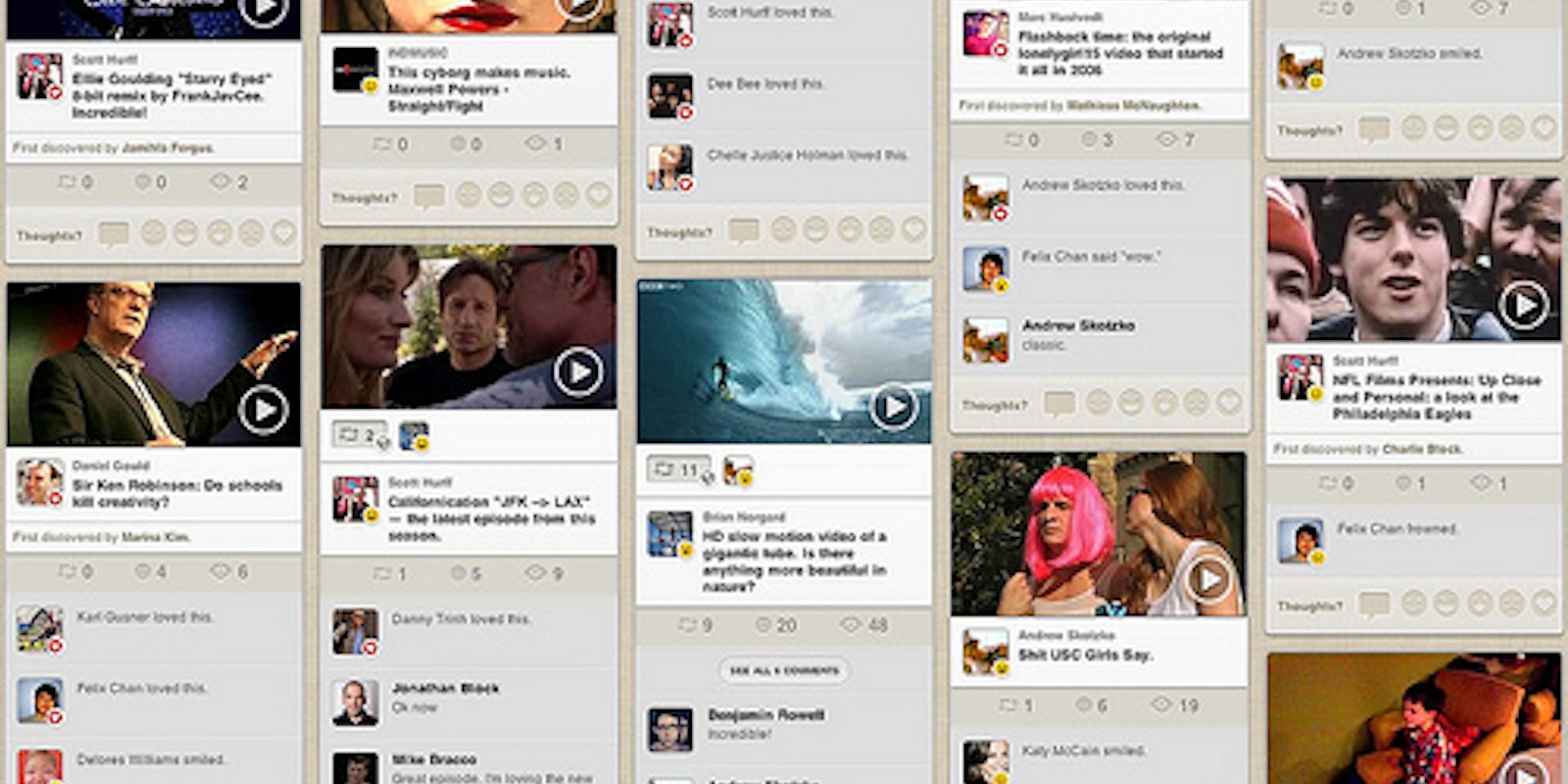At first glance, it’s easy to deride Chill as Pinterest for videos.
But if it were nothing more than a Pinterest clone, it’s doubtful it would have grown so quickly in just six months. The site has 17 million users, nearly as many as Pinterest itself, according to representative Marc Hustvedt. And no, he said, that number wasn’t a typo.
Founded late last year and relaunched in January, Chill has carved out a niche for itself as a video network that lets users collect, share, “like,” and recommend videos for one another. It all takes place on a nearly universal video player that supports everything from phones to TV sets. The site even has a partnership with Hulu, so users can switch from viewing feature films to amateur cat videos in an instant.
Not to begrudge anyone’s success, but why don’t Chill users just use YouTube?
“YouTube is optimized for search,” Hustvedt told the Daily Dot.
“If you want people to see your video, you tag and put keywords in the title like in a search engine. It causes a blind spot.”
On the other hand, he said, Chill lets users see what their friends actually watch (a trait YouTube tried to emphasize in its Cosmic Panda redesign).
“I love chill and am so happy you are here for the world,” user Christina Miskam exclaimed on Facebook, where she’s one of the site’s 33,000 fans. “You give us glimpses of the lovely, humorous, humanity, sweet, heart warming, inspirational and thought provoking. The world is not always kind…….But Chill is!”
Just like Pinterest, Chill attracts a particular demographic that favors certain circles of friends. Similar to the way you’re likely to find design and fashion pins on Pinterest, Chill users particularly love extreme sports and moving political speeches. (Demographically, Hustvedt said users are split between men and women, primarily between ages 18 and 35.)
It makes sense that extreme sports are popular, since Californian Hustvedt is an avid surfer. Just as Pinterest CEO Ben Silbermann handed out Pinterest’s first 30 invitations to design bloggers in his circle, Chill’s userbase naturally originated from Hustvedt’s friends.
But even when it comes to the site from which Chill takes its design sensibilities, Hustvedt claims there are some significant differences.
“Pinterest is built around multiple types of media objects,” he said. “Here you’re not walking from feature film to photos to article link to video. Just like Spotify is purely music and Instagram is solely photography, Chill is just videos.”
That’s the company executive talking, of course. From there, Chill’s international userbase (most prominent in the U.S., U.K., Australia, Canada, France, and Japan) has taken the site’s mission out of Hustvedt’s hands and turned it into a sort of Wikipedia for video. Users can sort videos into “collections” (think pinboards), with occasionally stunning results.
“After Steve Jobs died, nobody had really taken the time to handpick videos of him from around the Internet,” he said. “We didn’t even know that was something that was missing until we saw one user’s archive, made entirely out of love. The organization users can make around videos can be very powerful.”
In the end, that’s what separates Chill from other Pinterest clones. Hustvedt and the Chill team can only do so much, but it’s users that make Chill an entertainment experience.
“That’s what we do better than a blog post. HuffPost might run one crazy video about an entertaining topic. Our users go much further than that. We have this much deeper trove that you don’t have to search for. It’s all there because you come into one person’s video collection.”
Photo via Chill


